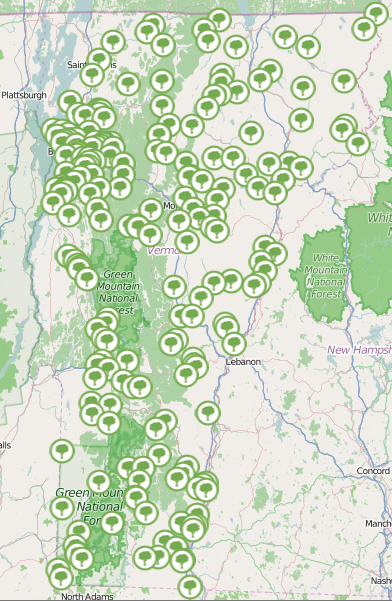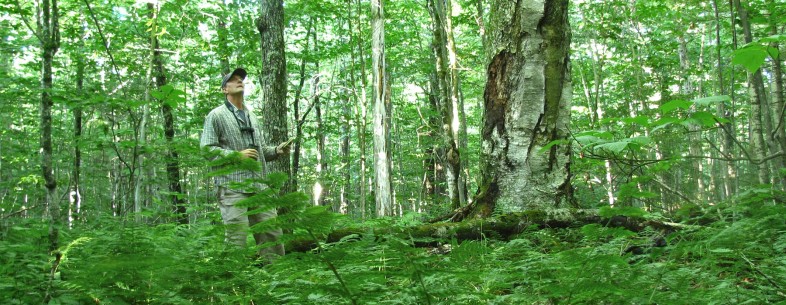In 1915 the state of Vermont passed a law which allowed towns to acquire forest land for public benefit leading to the creation of over 300 town forests across the state. One hundred years later the State is celebrating the centennial of this legislation by recognizing the value town forests have in our communities. These include providing forest products, creating places for recreation and preserving habitat for wildlife. Thanks to a suggestion by Bridget Butler (AKA Bird Diva), we would also like to recognize these important properties by encouraging birders to visit and report their sightings to Vermont eBird.
To facilitate the sharing of bird data collected on town forests, we would like to promote the creation of eBird Hotspots for them. But since there are such a large number of town forests across the state, and not all of them are open to uses such as bird watching, we would like to appeal to local knowledge of the Vermont birding community to help with the creation these hotspots.

Today, there are over 67,000 acres of forestland owned by 168 municipalities, all open to the public to enjoy – find a town forest near you.
Here is how you can help. First research the town forests in your area and find out if they have public access. The Vermont Community Forest website has a map of town forests that can help you get started. Once you have found a forest and you are allowed to visit it, go birding at the town forest. Then submit a checklist from there by finding the correct location on the map, and checking the box next to “Suggest as a Birding HotSpot?”
If you already have submitted checklists from a town forest that doesn’t yet have a hotspot, you can suggest it by following these instructions on the eBird website. If you have checklists for a Town Forest that already has a hotspot, you can merge them into the hotspot by following these instructions on the eBird website.
And the final and most important step is to keep visiting town forests and submitting checklists from them so that we can create a pool of data that shows how important town forest habitat is to the birds!
Ron Payne, Ian Worley and Kent McFarland
Vermont eBird hotspot managers

